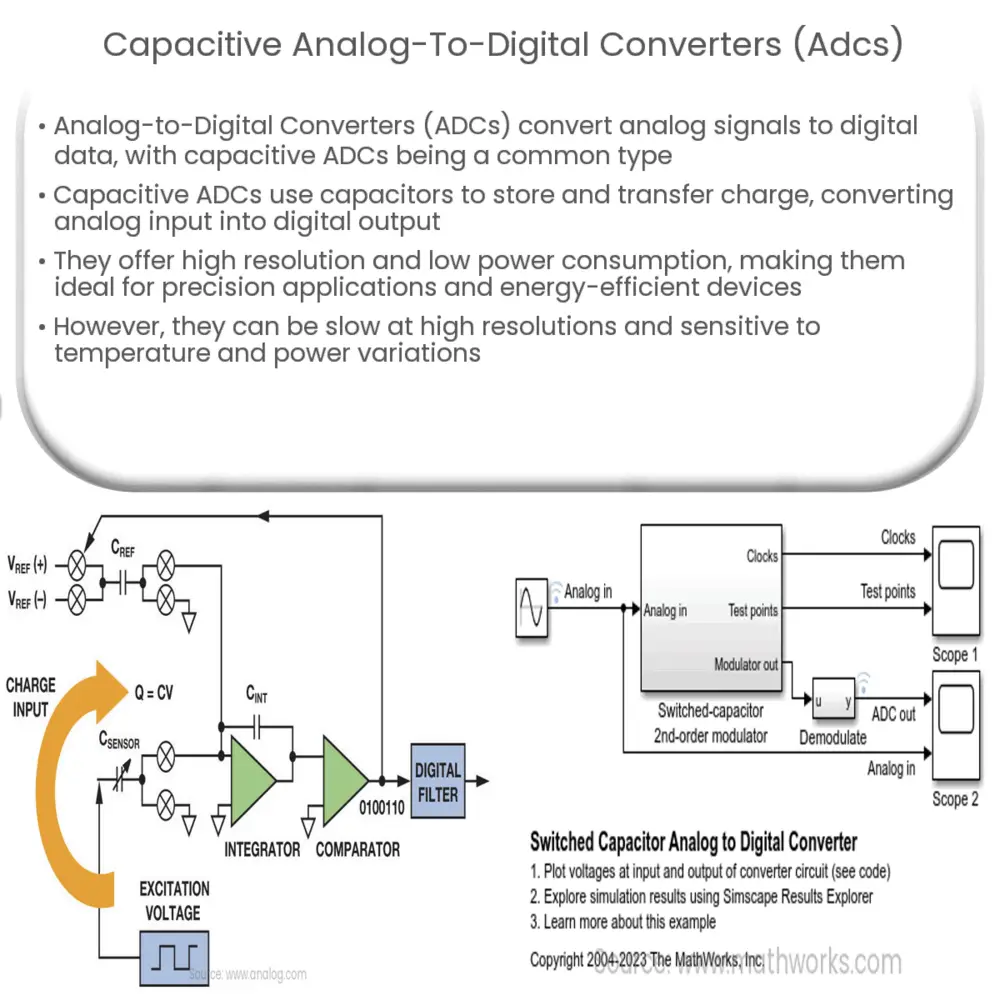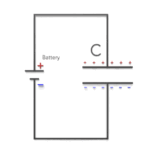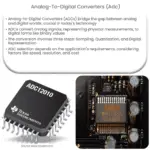Explore the world of Capacitive Analog-to-Digital Converters (ADCs), their operation, applications, benefits, and limitations.

Introduction to Capacitive Analog-to-Digital Converters (ADCs)
Analog-to-Digital Converters (ADCs) form a crucial link in the chain of modern electronic systems. They translate analog signals, which naturally occur in most physical phenomena, into digital data that a computer or digital device can process. One of the most commonly used types of ADCs is the capacitive ADC.
Understanding Capacitive ADCs
A capacitive ADC is a type of ADC that uses capacitors to store and transfer charge, thereby converting the analog input signal into a digital output. The capacitor’s unique ability to store and release electrical energy with minimal loss makes it ideal for ADC applications.
- Charge Redistribution: The operation of capacitive ADCs typically revolves around the concept of charge redistribution. Capacitive ADCs contain an array of binary-weighted capacitors that, when used together, can produce a range of voltage levels corresponding to digital output.
- Successive Approximation: One common type of capacitive ADC is the Successive Approximation Register (SAR) ADC. It uses a binary search algorithm to determine the digital equivalent of the analog input signal.
- Delta-Sigma Modulation: Another type of capacitive ADC is the Delta-Sigma (Δ-Σ) ADC, which oversamples the analog input signal and uses noise shaping to increase resolution and dynamic range.
Components of Capacitive ADCs
The primary components of capacitive ADCs include a sample-and-hold circuit, a comparator, and a digital-to-analog converter (DAC). The sample-and-hold circuit captures the analog input signal at a specific point in time. This sampled signal is then compared with a reference signal produced by the DAC. The comparator’s output forms the digital output of the ADC.
Benefits of Capacitive ADCs
Capacitive ADCs have several key benefits that make them a popular choice in digital systems. First, they provide high-resolution digital output, which is essential in applications requiring precise signal conversion. Second, their power consumption is typically lower than that of other types of ADCs, making them a suitable choice for battery-powered and energy-efficient devices.
In the next section, we will delve deeper into the working principle of capacitive ADCs, their applications, and their potential drawbacks.
Detailed Operation of Capacitive ADCs
The operation of capacitive ADCs hinges on the principle of charge redistribution. In a binary-weighted capacitive DAC, a binary-weighted array of capacitors is connected to a reference voltage (VREF). When the ADC receives an input, the capacitors rearrange their charge in relation to this reference voltage, thus translating the analog input into a digital signal. For Successive Approximation Register (SAR) ADCs, the SAR control logic uses a binary search algorithm to generate the digital output. In contrast, Delta-Sigma ADCs oversample the input signal and use digital filtering and decimation to generate a high-resolution output.
Applications of Capacitive ADCs
Capacitive ADCs find a myriad of applications in modern electronics. They are integral to digital signal processing systems like digital audio equipment, image sensors in digital cameras, and data acquisition systems for scientific instruments. Moreover, due to their energy efficiency, they are preferred in battery-operated devices such as mobile phones, tablets, and other portable devices.
Limitations of Capacitive ADCs
Despite their numerous advantages, capacitive ADCs also have some limitations. The speed of conversion is usually inversely proportional to the resolution; as the resolution increases, the conversion speed decreases. Therefore, they may not be suitable for applications that require high-speed conversions at high resolutions. Moreover, capacitive ADCs can be sensitive to temperature and power supply variations, which might cause conversion inaccuracies.
Conclusion
In conclusion, capacitive ADCs are a vital component in the digitization of analog signals. They offer a balance between precision and power consumption, making them a popular choice in a broad spectrum of applications. However, just like any other technology, they are not devoid of limitations. Understanding these advantages and challenges is crucial when selecting an ADC for a specific application. As technology advances, further research and development in this field will likely continue to improve the performance and versatility of capacitive ADCs.



